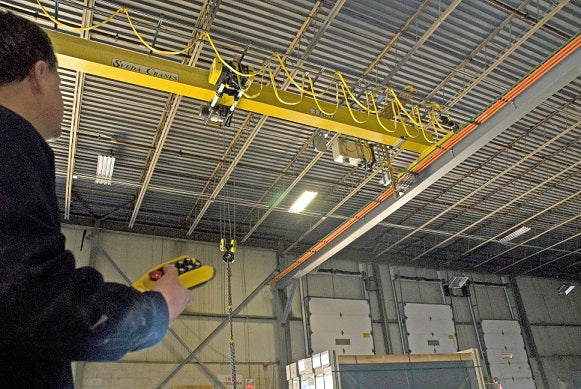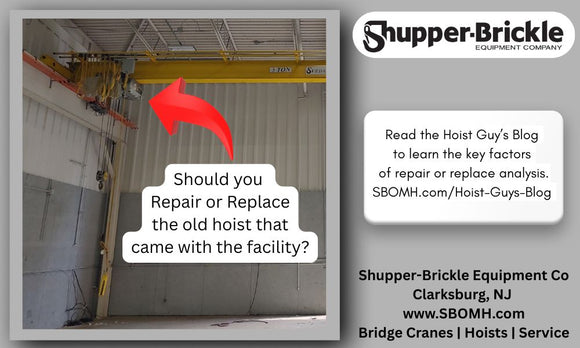
Top Hoist Purchasing Mistakes to Avoid
Andrew T. Litecky
Welcome to The Hoist Guy's Blog, where our resident Hoist Guy, Andrew T. Litecky, shares his knowledge and experience of many years in the overhead material handling sales and service industry to help you avoid these mistakes when purchasing an overhead hoist.
Overhead Hoist & Lift System Buying Tips
Of all the considerations when buying a hoist, cost is certainly a factor. But cutting corners to save a few bucks can come back to haunt you. Avoid these key mistakes to get the best lifting equipment for your money.
-
Purchasing a hoist that’s too slow for the operation. A slower speed means lower horsepower and a cheaper price. This might look good on paper but look out for complaints from operators. The slower speed means it takes longer to do their job. Avoid this issue by checking the speed of the unit you’re replacing (for example, 14 feet per minute, 20 feet per minute, etc.). Or, when in doubt, ask the operator!
-
Buying a push trolley when a powered trolley is needed. When purchasing a trolley, here’s a general guideline: If an operator can safely push on the load at all times, then a push trolley will be fine. However, if the load is dangerous to handle, if there’s an opening in the floor, or if the operator needs to stand away from the load, then a motor-driven trolley is required.
-
Buying a manual hoist for a long lift application. Manual hoists, units that lift and lower the load when the operator pulls the hand chain, are designed for relatively short heights. Any lift more than 20 feet really needs to be made by a powered hoist.
-
Purchasing a custom hoist with a finish unsuited for the environment. Hoists made standard by most manufacturers are finished with paint suitable for indoor use. If you need hoisting equipment for use outdoors or in an area where harsh chemicals are present, a special finish (for example – primer, finish coat, and/or urethane topcoat) is well worth the extra cost for longer lasting equipment. No matter what, never purchase a custom hoist without any finish. Declining the paint charge might seem like a savings, but the unit will likely be rusted before it hits your factory floor.
-
Purchasing a standard electric hoist for a hazardous location. Hazardous locations are defined by the National Electric Code by Class, Group, and Division. Electric hoists and trolleys must be specially configured for the requirements of the particular application. Using a standard hoist in a hazardous location could cause a catastrophic accident. Read another blog post on how hazardous location specs can never be optional.
-
Buying a single reeved hoist when true vertical lift is required. If you need the hoist to place an object precisely in one spot, then you need true vertical lift and double reeved wire rope hoist. Single reeved wire rope hoists are adequate for any application that doesn’t mind “hook drift’ – or, when the wire rope cable moves on and off the drum during the course of raising and lower the hook.
- Purchasing a standard duty unit for a heavy-duty cycle and trying to compensate with a higher capacity. Let’s say you have a 5-ton application where the hoist unit is used multiple times a day. It’s often rationalized that a 10-ton capacity hoist will be able to do the job since it can lift twice the load. However, this isn’t the case. To accommodate a high duty cycle, upgrade the hoist motor, the hoist brake and the controls. Specify heat treated sheaves and trolley wheels. Upgrades on a 5-ton capacity hoist will extend the operating life of the unit and save money overall.
Hoist Sales & Service Specialists
With almost 50 years in the business of hoist sales and service, we know overhead material handling! Contact us for questions about standards hoists or specialty applications.
Shupper-Brickle Equipment supplies a variety of overhead lifting equipment, such as bridge cranes and hoists, along with related services. Contact us for more information.
Want more Hoist Guy? Check out some other posts about Dual Redundant Hoist Brakes and Why Not Just Anyone Should Fix Your Hoist.


